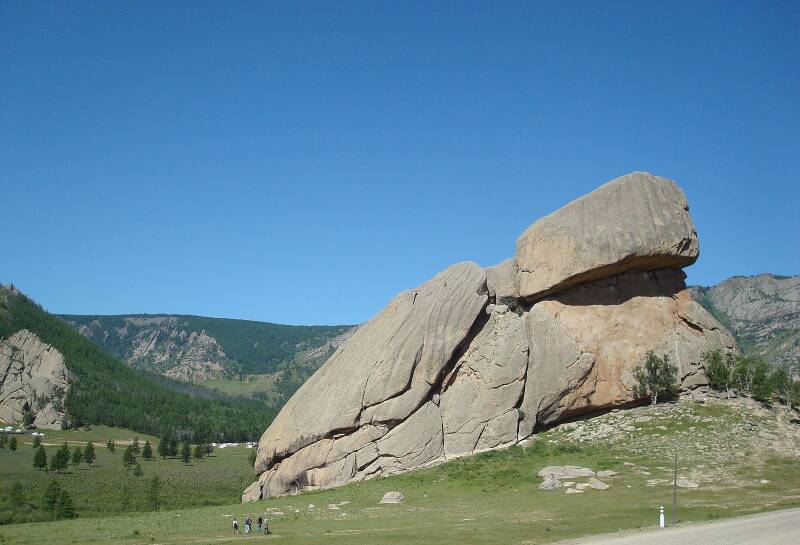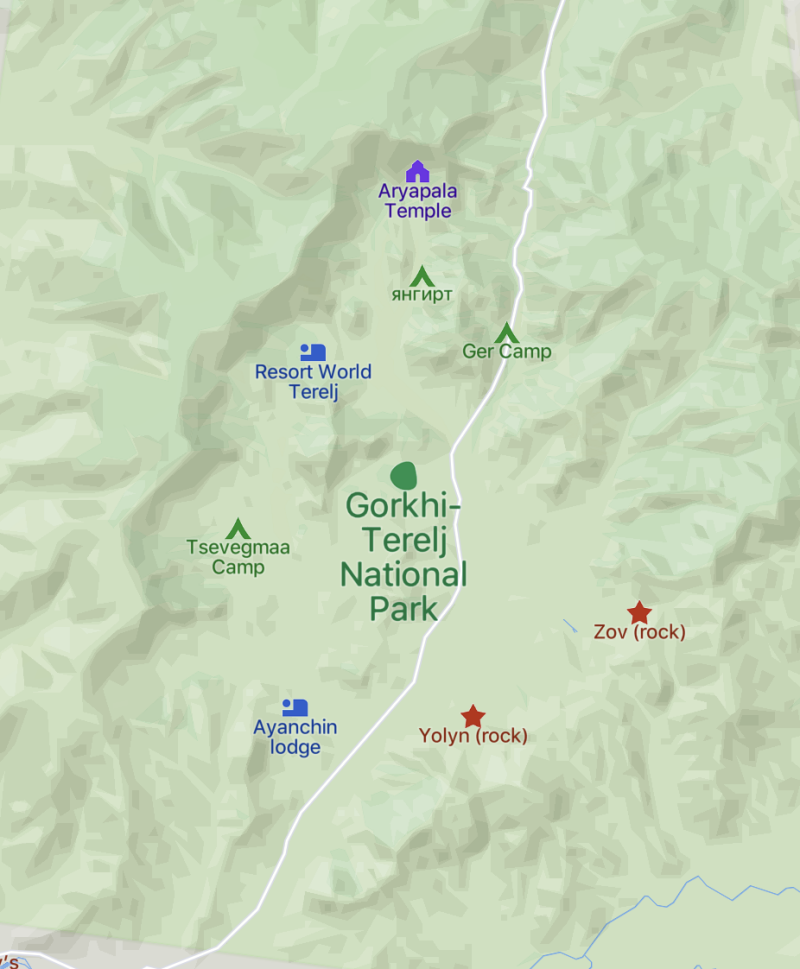Exploring Gorkhi Terelj National Park

Gorkhi-Terelj National Park is one of the most popular and picturesque destinations in Mongolia. Located about 55 kilometers from the capital city, Ulaanbaatar, it is an easily accessible natural retreat that offers a plethora of opportunities for relaxation and unwinding. The park covers an area of 2,864 square kilometers and is known for its stunning landscapes, unique rock formations, pristine rivers, and diverse flora and fauna.
The importance of Gorkhi-Terelj National Park for unwinding lies in the following aspects:
1. Natural beauty: The park is characterized by a breathtaking combination of lush meadows, forests, and rugged granite mountains. The famous Turtle Rock and the Aryapala Meditation Temple are just two of the many unique landmarks within the park. This natural beauty can help to calm the mind and rejuvenate the spirit.
2. Outdoor activities: Visitors can choose from a variety of outdoor activities such as hiking, horseback riding, mountain biking, rock climbing, and bird watching. These activities not only provide an opportunity to explore the park but also serve as a way to disconnect from the stresses of daily life and reconnect with nature.
3. Cultural experiences: Gorkhi-Terelj National Park is home to nomadic Mongolian families who still practice their traditional way of life. Visitors can learn about Mongolian culture and history by interacting with the locals and experiencing their hospitality firsthand.
4. Meditation and spirituality: The Aryapala Meditation Temple, located within the park, is an ideal spot for those seeking spiritual growth and inner peace. The temple offers meditation courses, allowing visitors to learn and practice mindfulness in a serene and tranquil environment.
5. Wildlife encounters: The park is home to a diverse range of wildlife, including red deer, marmots, and various bird species. Observing these creatures in their natural habitat can be a grounding and therapeutic experience.
In summary, Gorkhi-Terelj National Park serves as an important destination for unwinding due to its natural beauty, diverse outdoor activities, cultural experiences, and opportunities for meditation and spiritual growth. Its proximity to Ulaanbaatar makes it an ideal getaway for both locals and tourists seeking refuge from the hustle and bustle of urban life.

Three days itinerary
Day 1: Arrival and exploration of Turtle Rock area
Morning:
- Depart from Ulaanbaatar and drive to Gorkhi-Terelj National Park (about 1.5-hour drive)
- Check in to your chosen accommodation (ger camp, hotel, or guesthouse)
Afternoon:
- Explore the Turtle Rock area, which is named after a turtle-shaped rock formation
- Visit the nearby Ariyabal Meditation Temple, which offers panoramic views of the surrounding landscape
Evening:
- Return to your accommodation and enjoy a traditional Mongolian meal, such as khorkhog (barbecued meat) or buuz (steamed dumplings)
- Relax and stargaze, taking in the clear night sky
Day 2: Hiking and horseback riding
Morning:
- After breakfast, go for a guided hiking excursion to explore the park's picturesque valleys, rivers, and forests
- Optionally, visit a local nomadic family to learn about their traditional way of life and enjoy some homemade dairy products
Afternoon:
- Enjoy a picnic lunch in the park
- Go horseback riding with a local guide, taking in the unique rock formations and expansive steppe
Evening:
- Return to your accommodation and rest
- Enjoy dinner at your lodging, sampling more Mongolian cuisine
Day 3: Visit Chinggis Khaan Statue Complex and return to Ulaanbaatar
Morning:
- Check out of your accommodation and drive to the Chinggis Khaan Statue Complex
- Visit the 40-meter tall statue of Chinggis Khaan, the largest equestrian statue in the world, and explore the museum at its base
Afternoon:
- Have lunch at a local restaurant near the statue complex
- Drive back to Ulaanbaatar and explore the city or continue your journey elsewhere in Mongolia
15 birds that can be spotted at the park
| Bird | Descroption | Interesting Facts |
|---|---|---|
| Crimson Sunbird | Small, colorful nectar-feeding bird with a long, curved bill and bright red plumage. | The male's striking appearance is used to attract mates. |
| Ghorki Pheasant | Medium-sized pheasant with iridescent green and blue plumage, native to Ghorki National Park. | The bird is named after the park and is its unofficial mascot. |
| Black-winged Stilt | Tall, slender wading bird with long, thin legs and a straight black bill. | Its legs are among the longest of any bird relative to its body size. |
| White-rumped Vulture | Large scavenger with a bald head, white neck, and a distinctive white rump. | Critically endangered, it plays a vital role in keeping the ecosystem clean. |
| Asian Emerald Cuckoo | Small, brightly colored bird with iridescent green and blue plumage and a yellowish belly. | It's a brood parasite, laying its eggs in the nests of other bird species. |
| Fire-tailed Sunbird | Small bird with a bright orange tail, a long, curved bill, and iridescent plumage. | Males have a fiery tail that they use in courtship displays. |
| Ibisbill | Unique wading bird with a long, curved bill, a gray body, and a red face. | It's the only member of its family, making it a truly unique species. |
| Great Hornbill | Large bird with a massive, curved bill and a brightly colored casque on its head. | The casque acts as a resonating chamber, amplifying the bird's calls. |
| Himalayan Monal | Colorful, medium-sized pheasant with iridescent plumage and a fan-shaped crest. | The national bird of Nepal, it's known for its impressive courtship dance. |
| Rufous-necked Hornbill | Large hornbill with a curved bill, a bright orange neck, and a black and white body. | It's considered vulnerable due to habitat loss and hunting. |
| Scarlet Minivet | Small, colorful bird with a red or orange body, black wings, and a black tail. | Both males and females have bright colors, but females are more yellowish. |
| Wallcreeper | Small, agile bird with a gray body, black wings, and a long, slender bill. | It can climb vertical surfaces with ease, thanks to its specialized feet. |
| Black-and-yellow Grosbeak | Medium-sized finch with a thick bill, black head, and a bright yellow body. | Despite its bright colors, it's known for its surprisingly shy behavior. |
| Himalayan Griffon | Large vulture with a bald head, white neck ruff, and a dark brown body. | One of the highest flying birds, it has been observed above 8,000 meters. |
| Green-tailed Sunbird | Small, nectar-feeding bird with a green tail, a long, curved bill, and a red head. | It's capable of hovering like a hummingbird while feeding |


